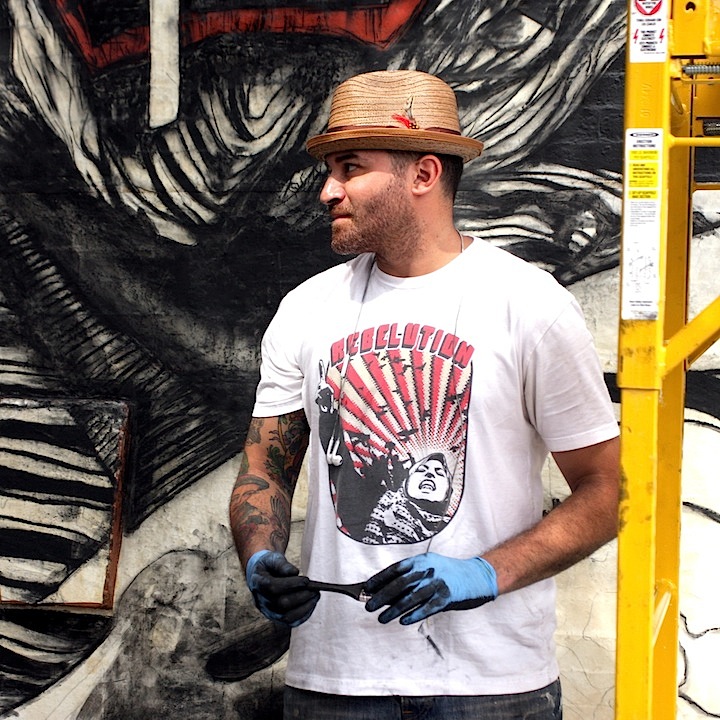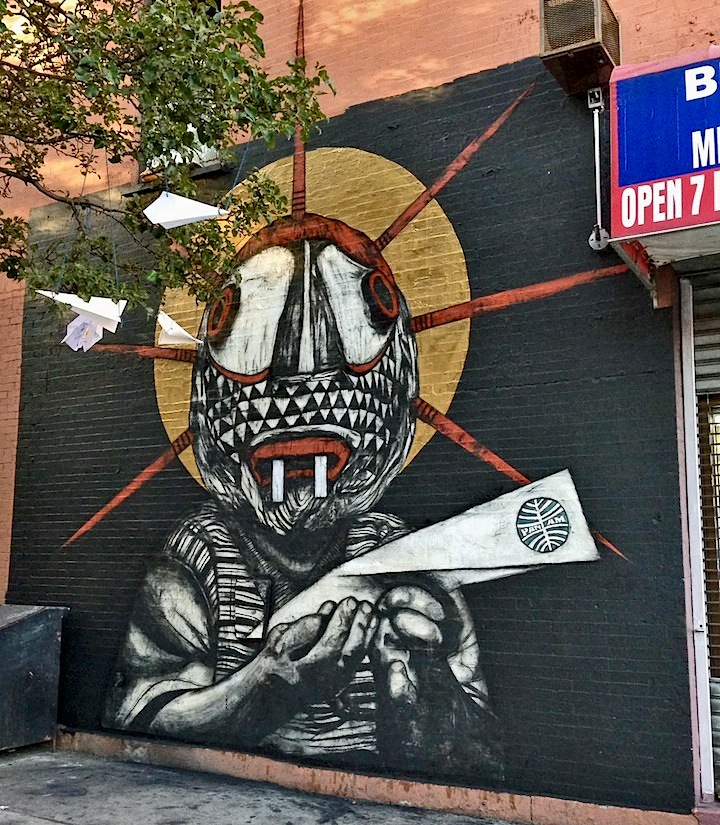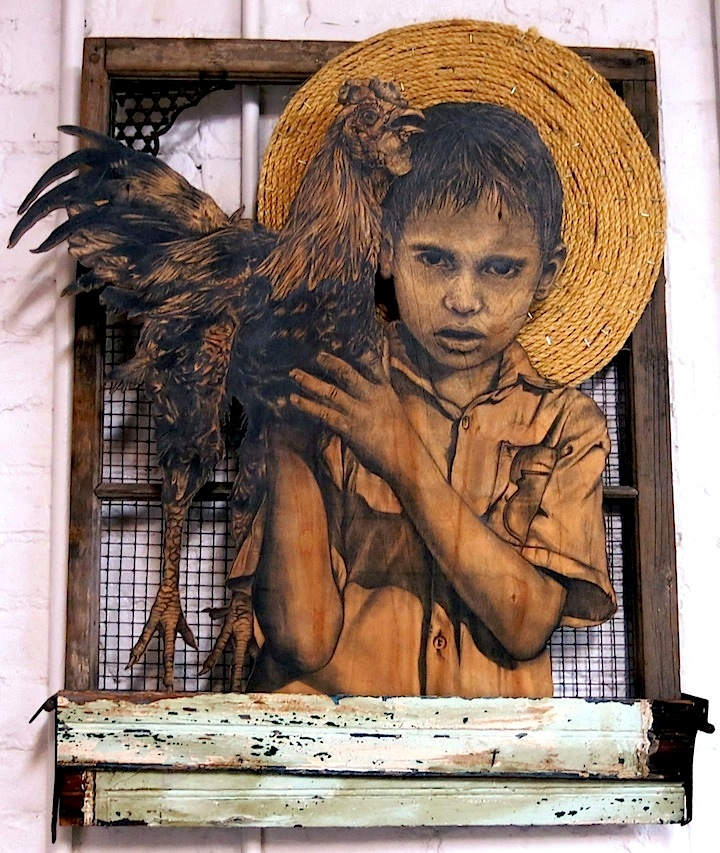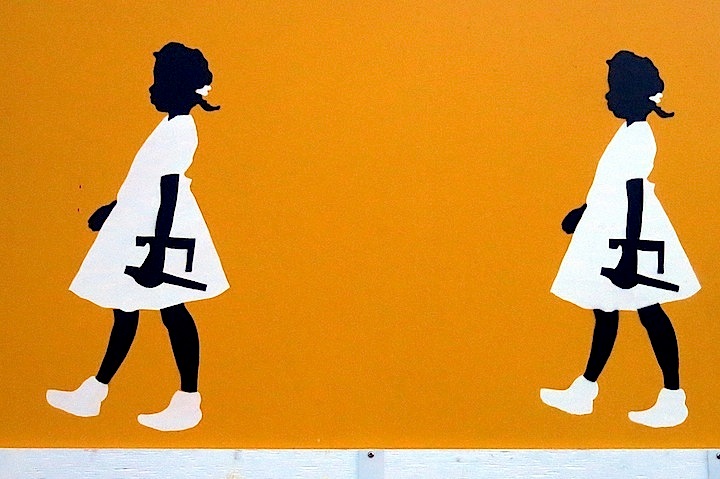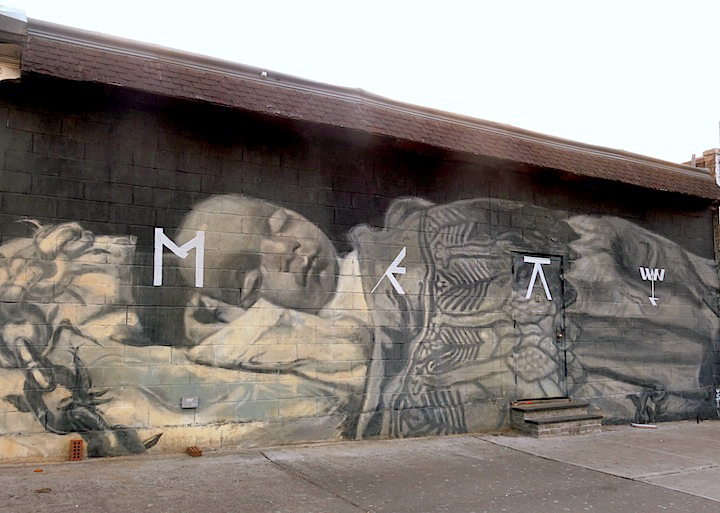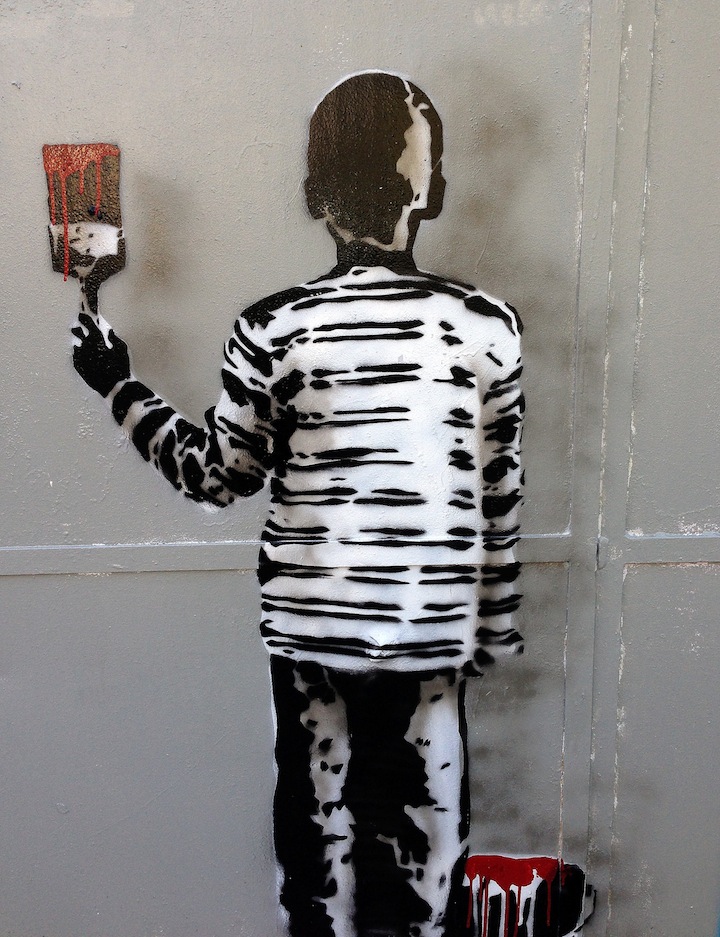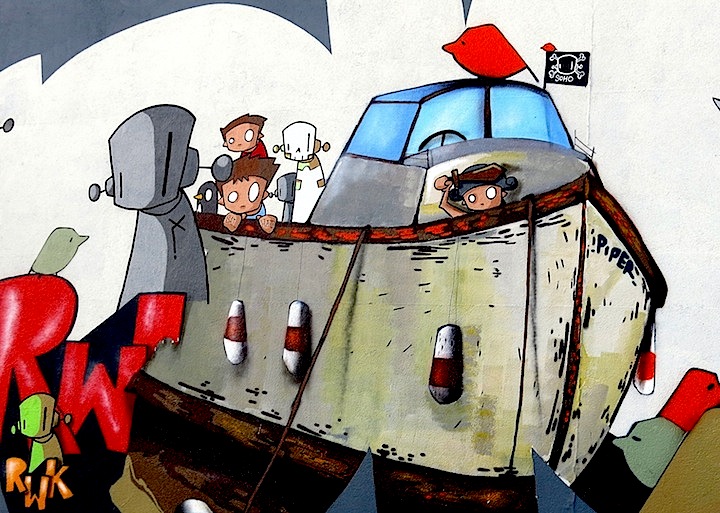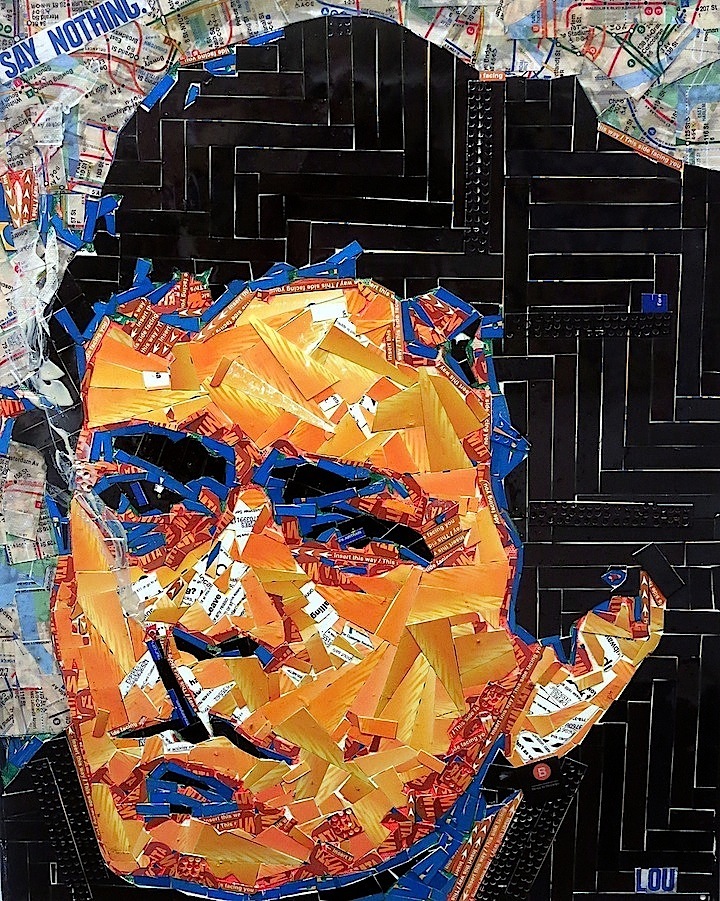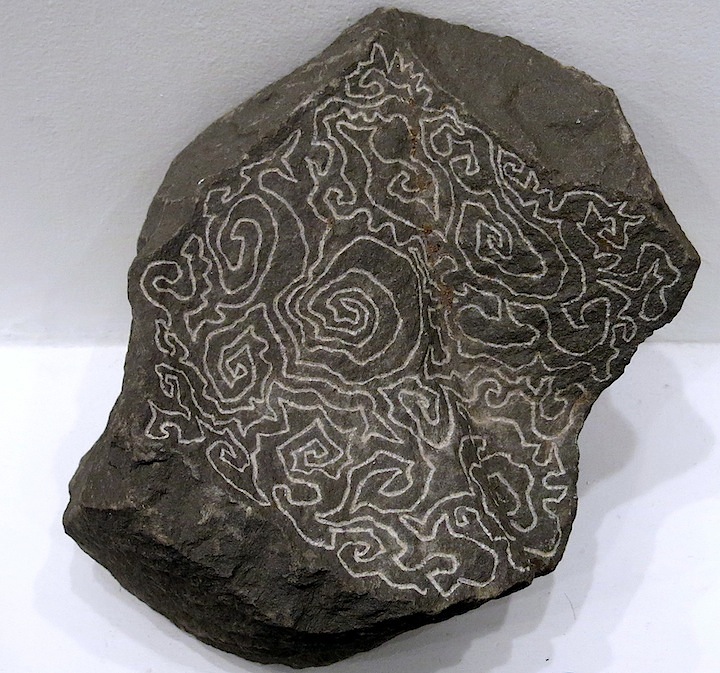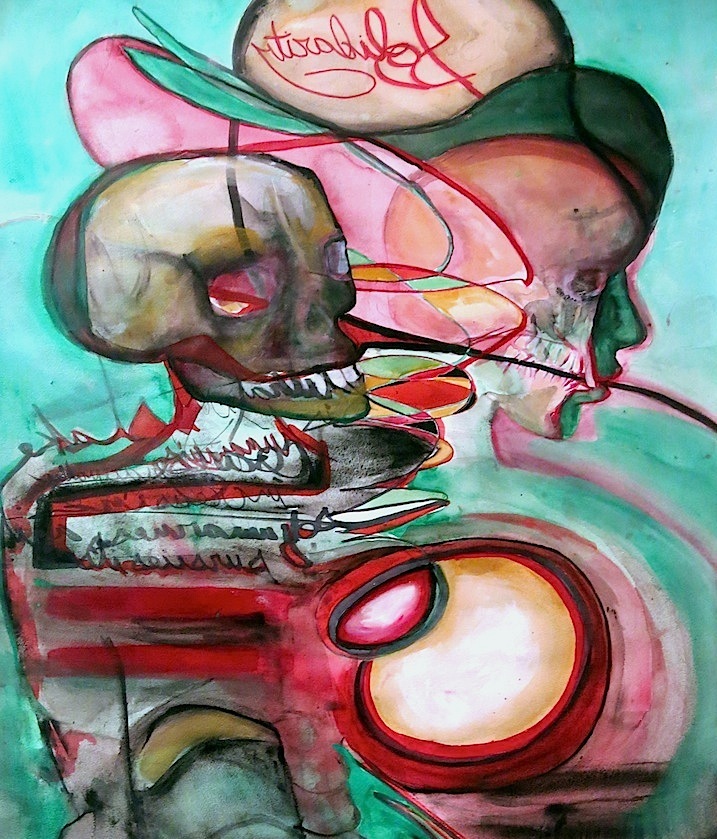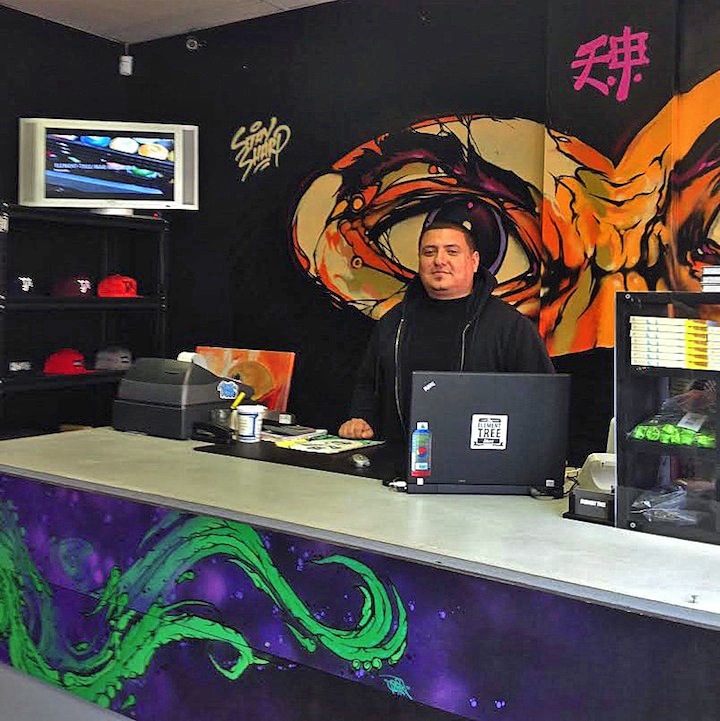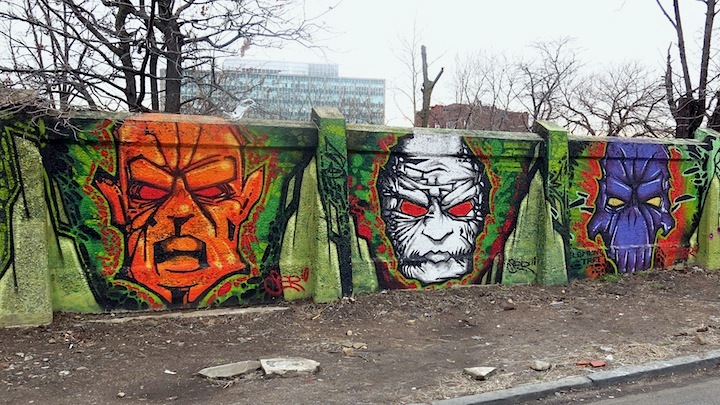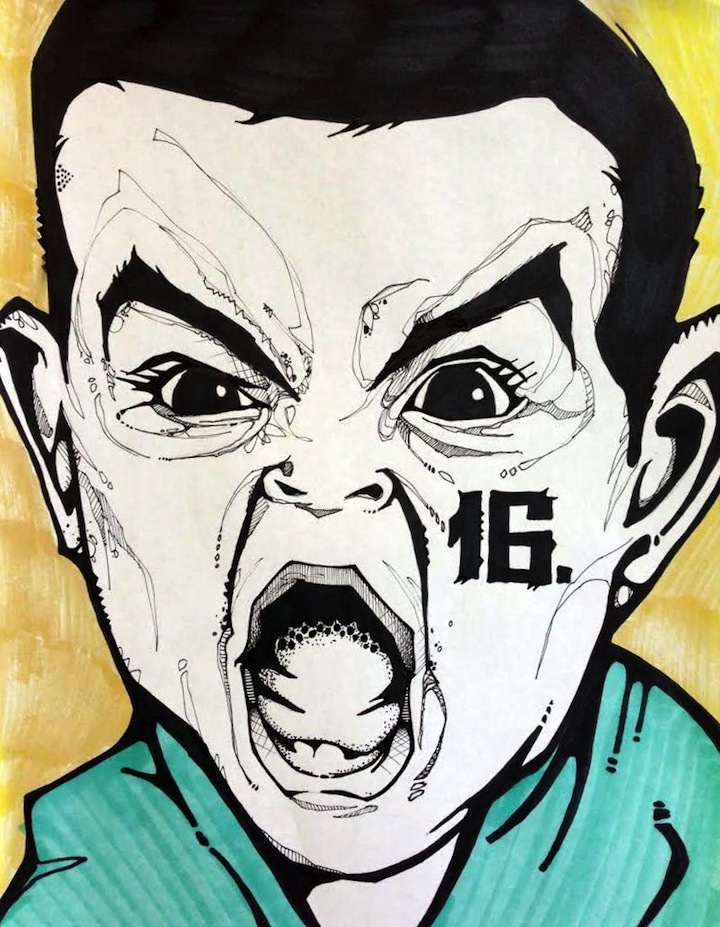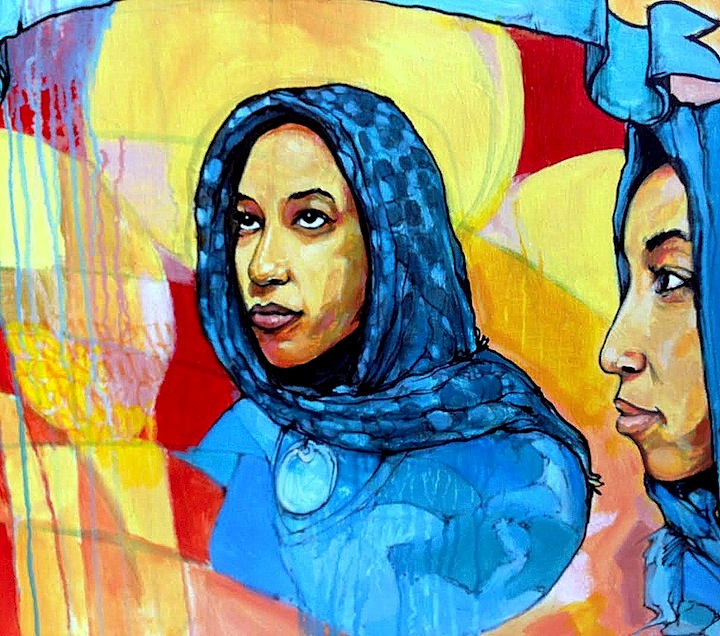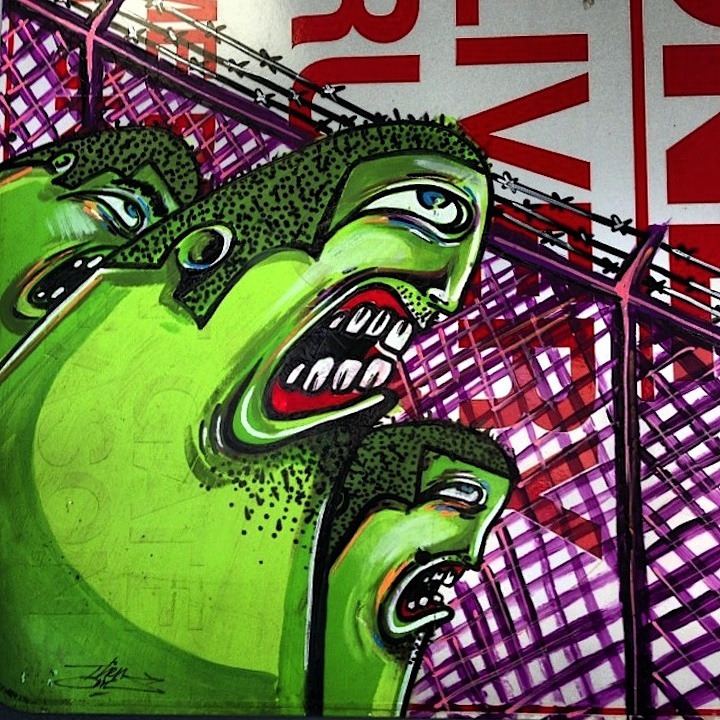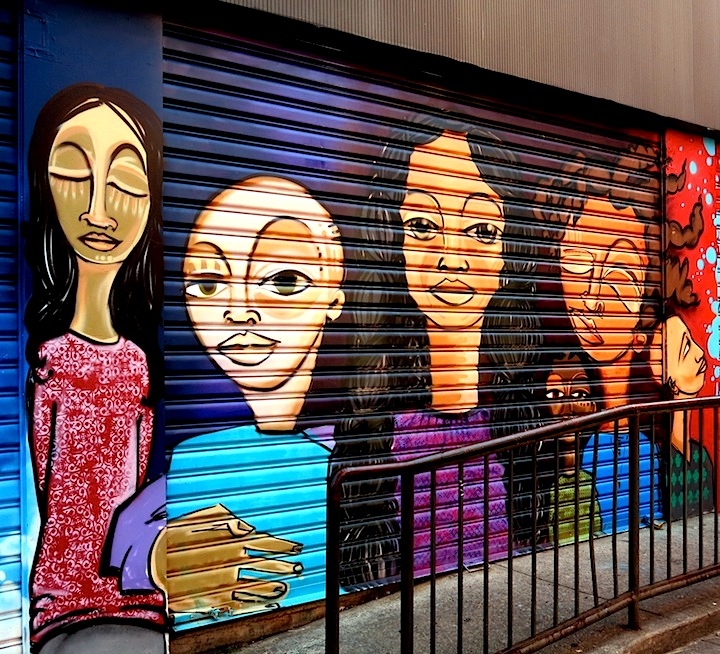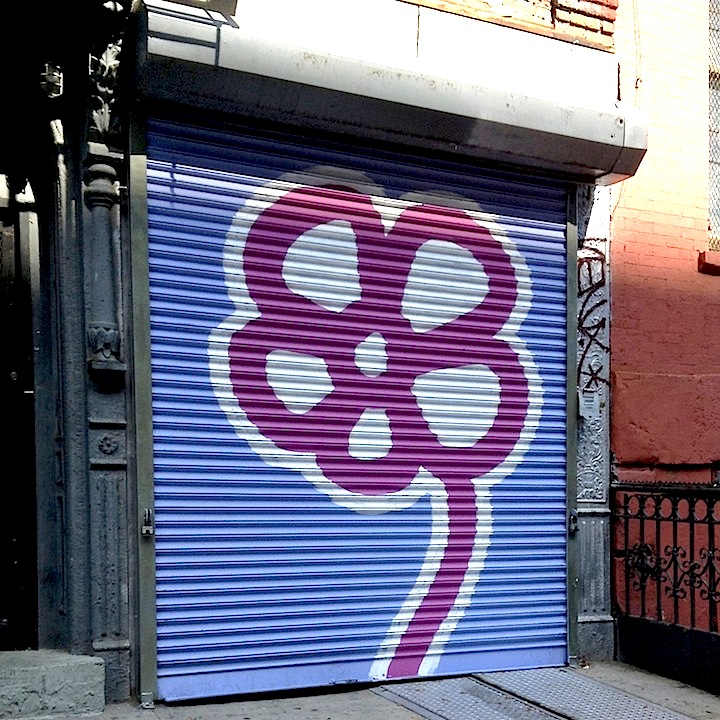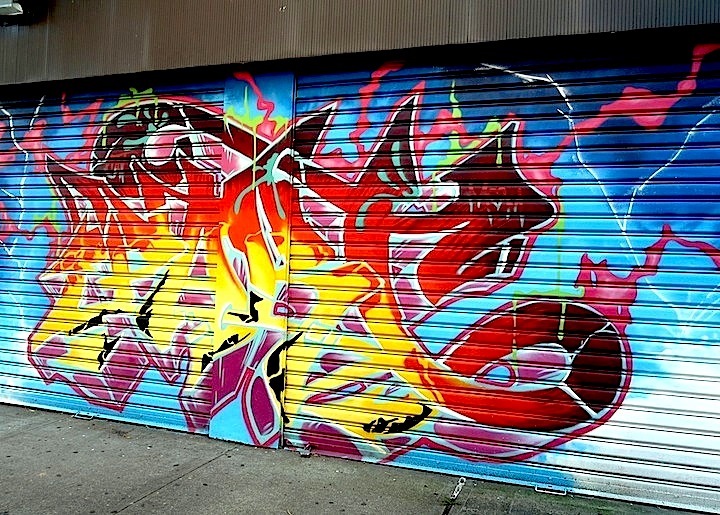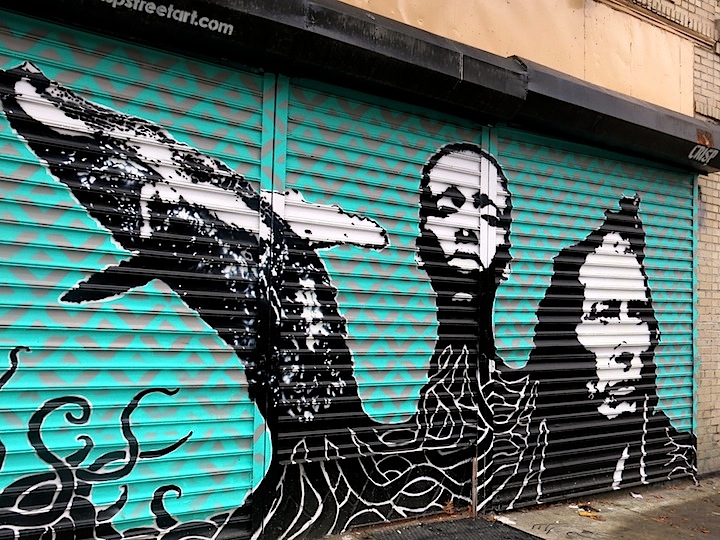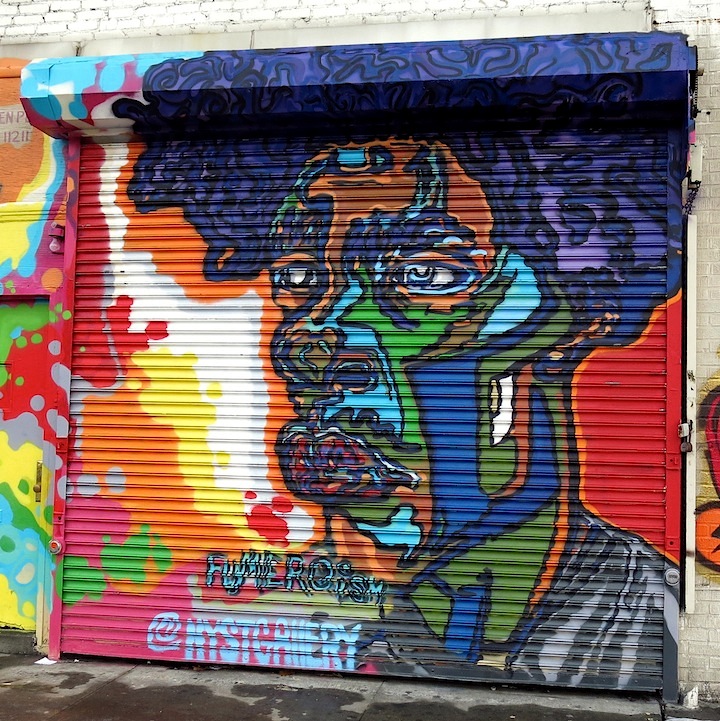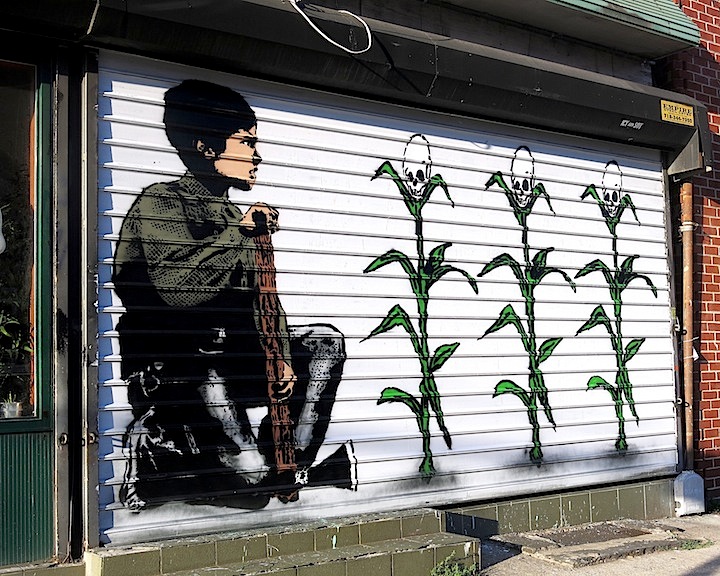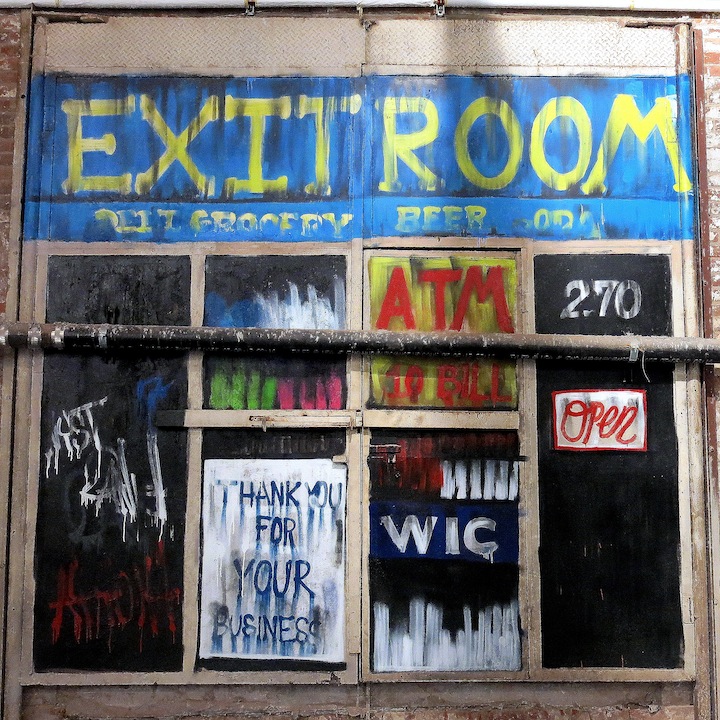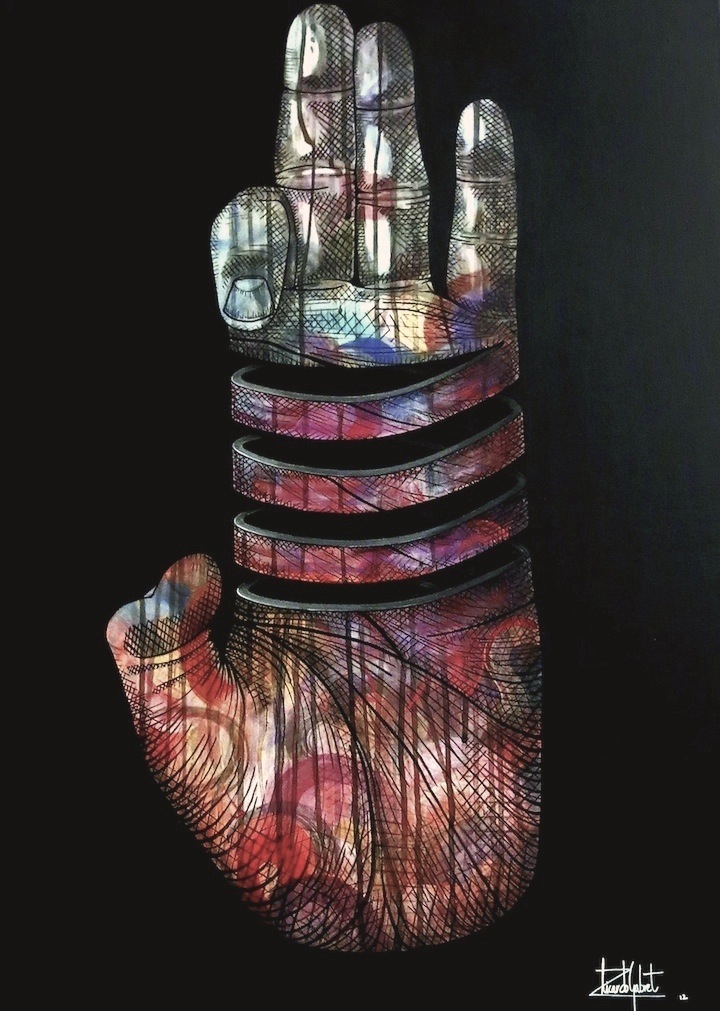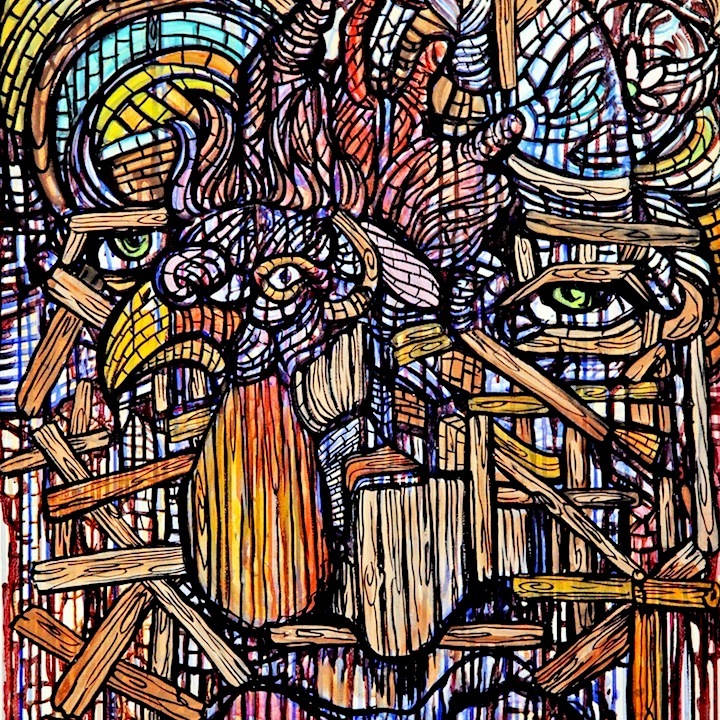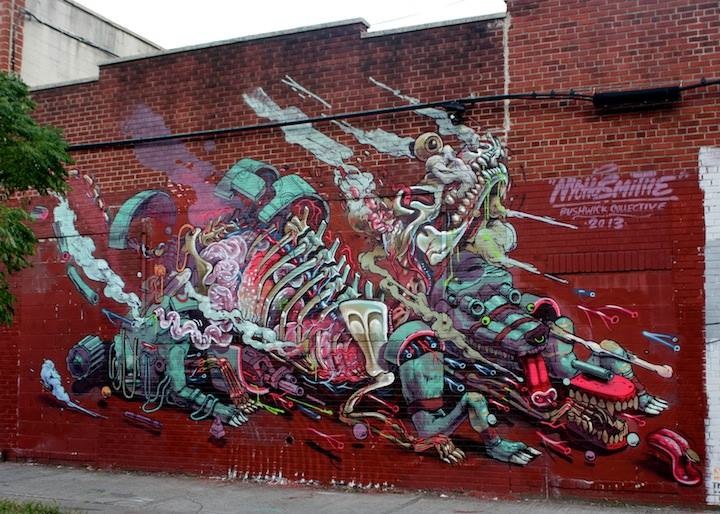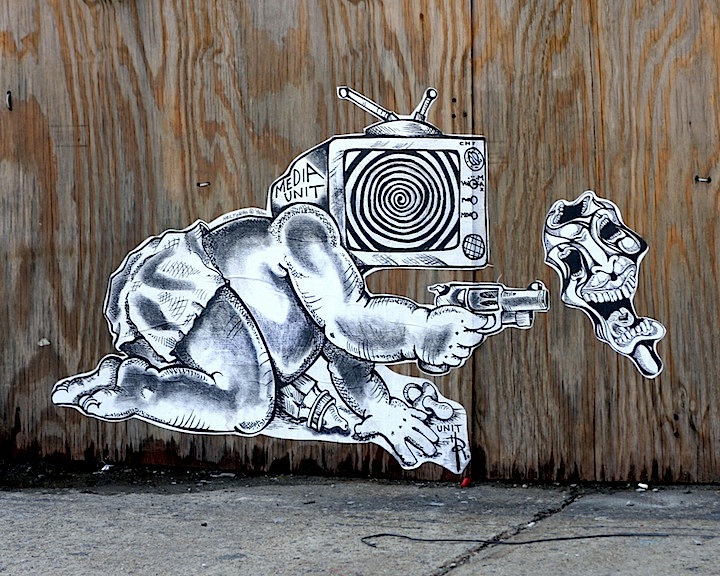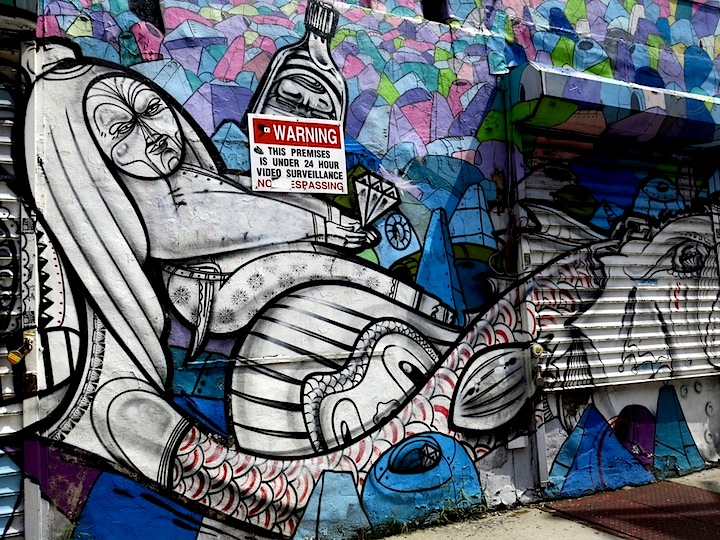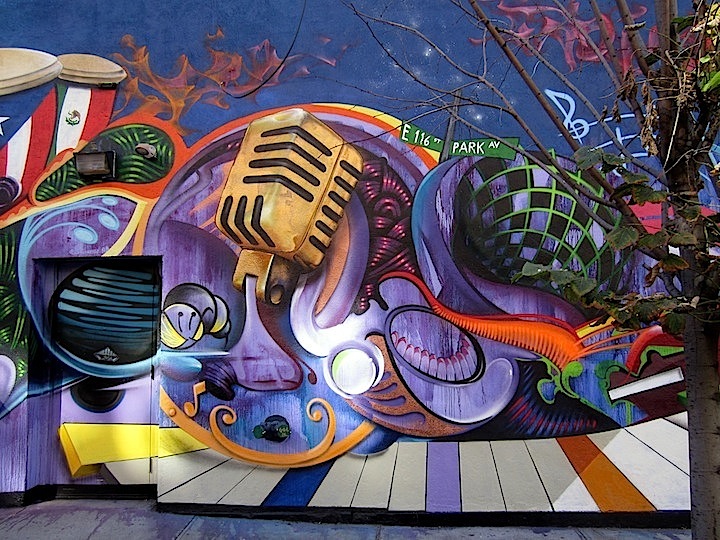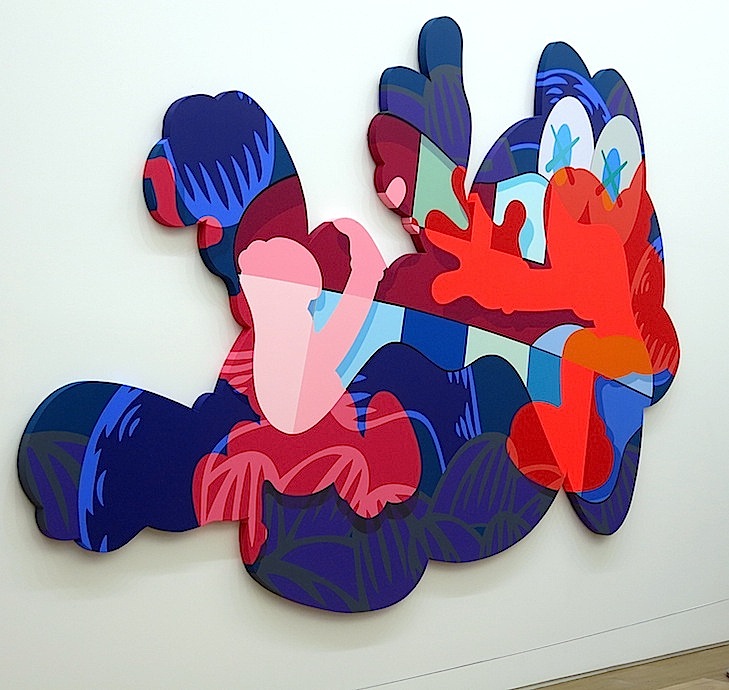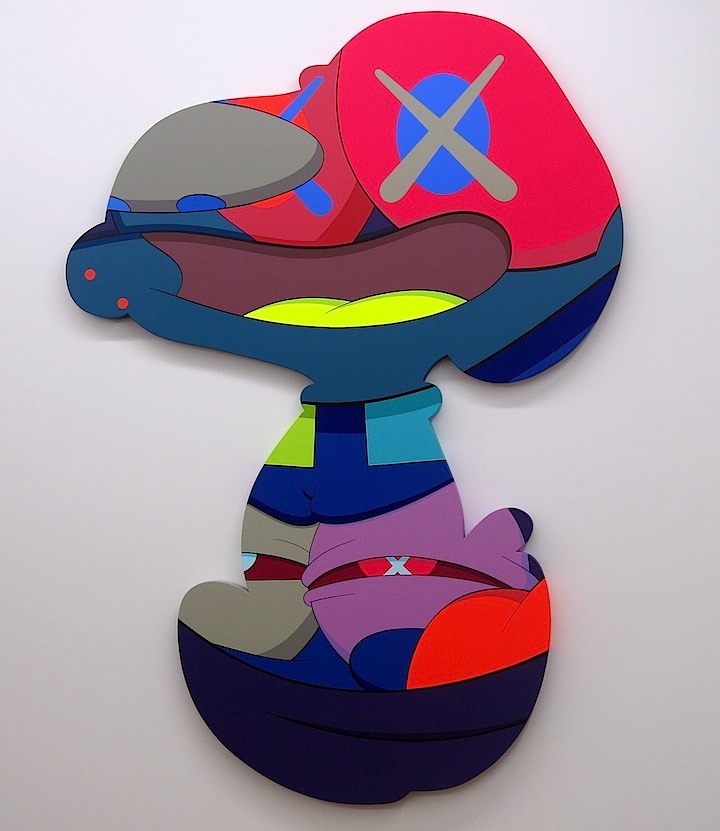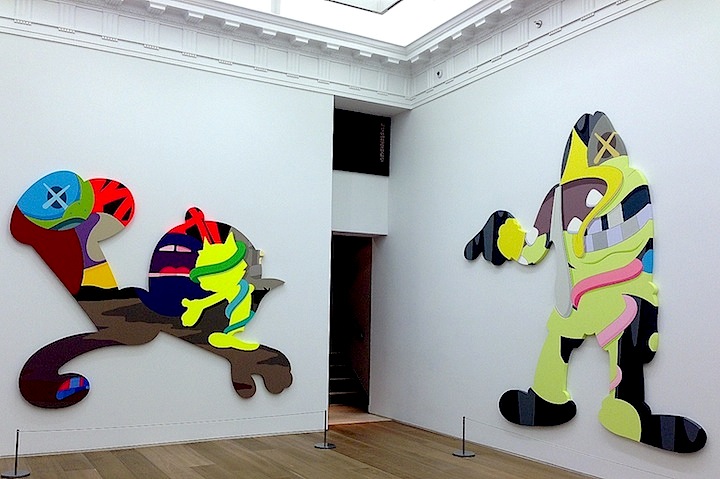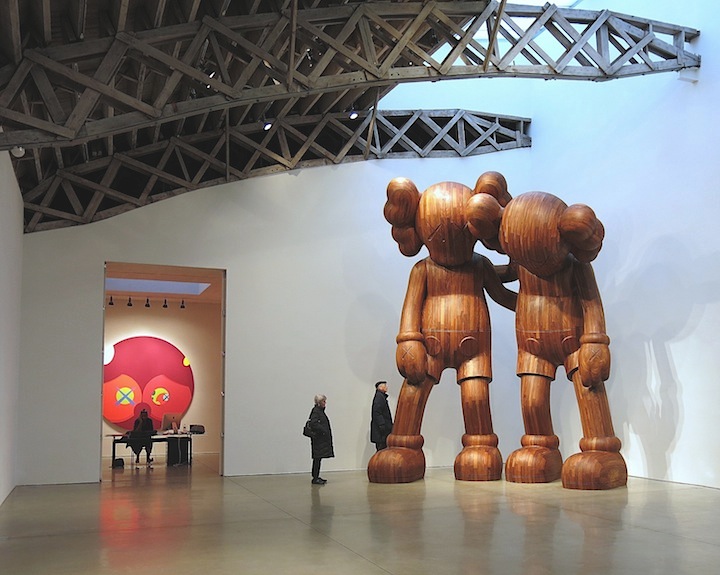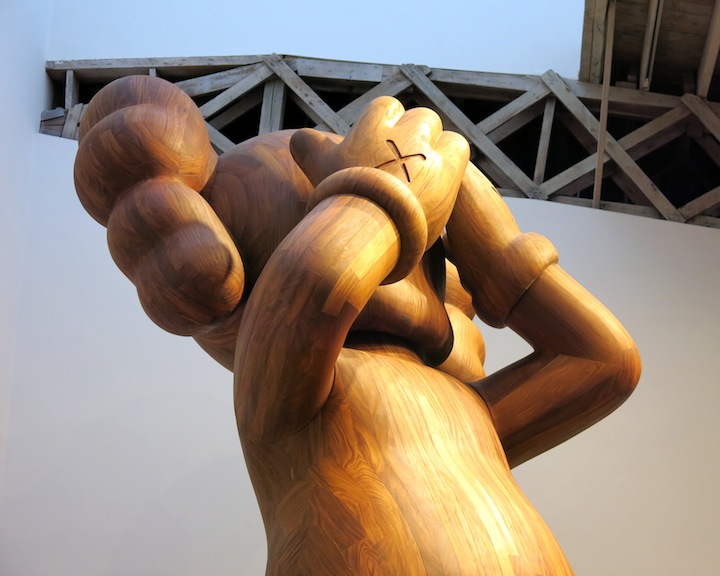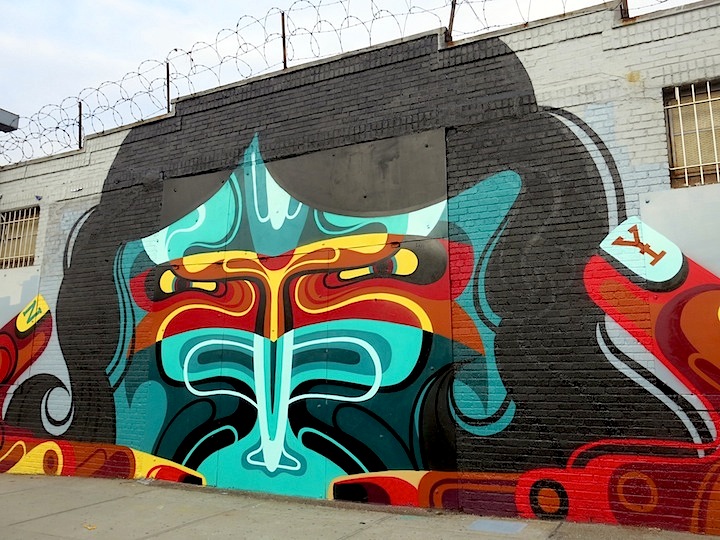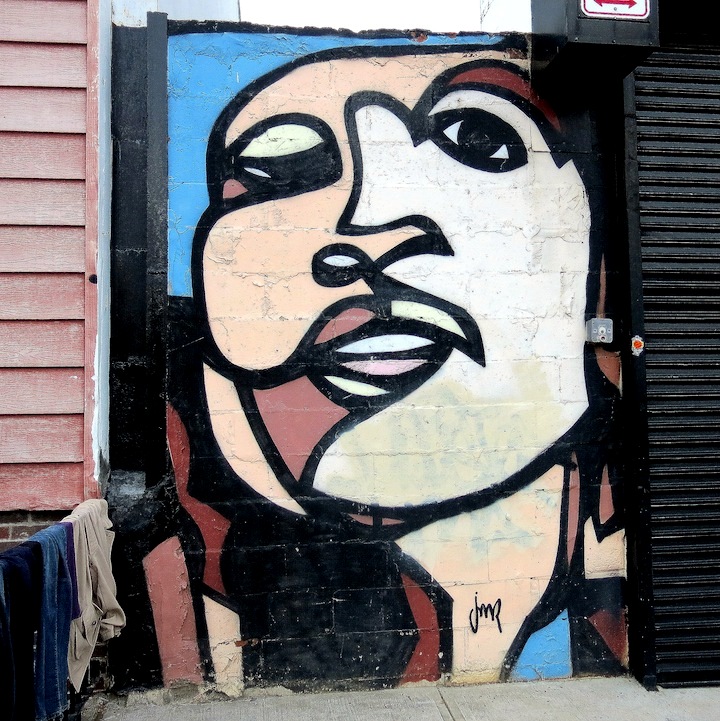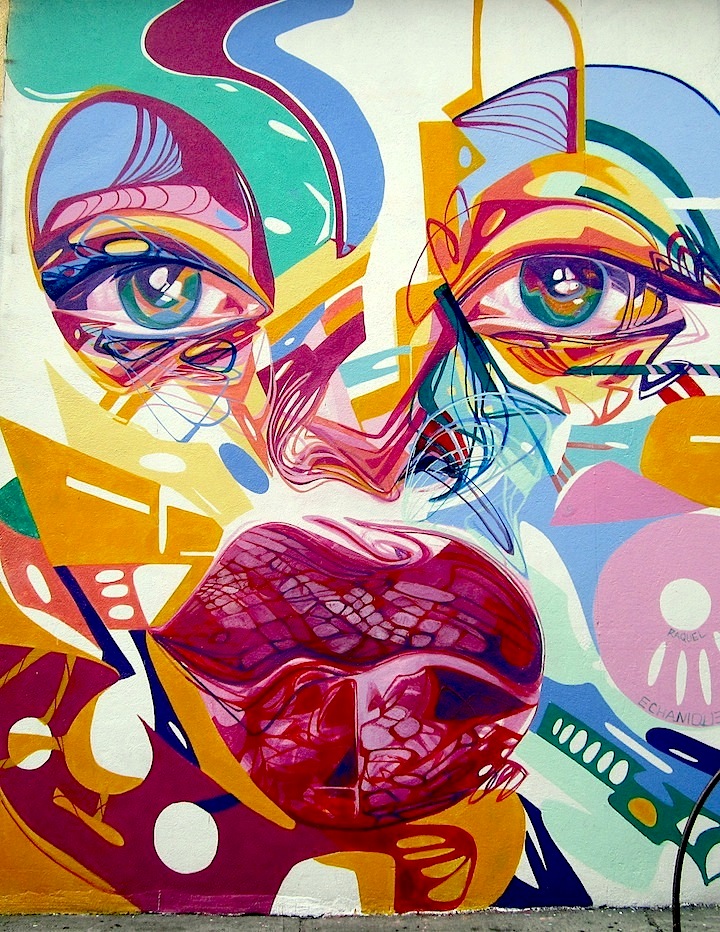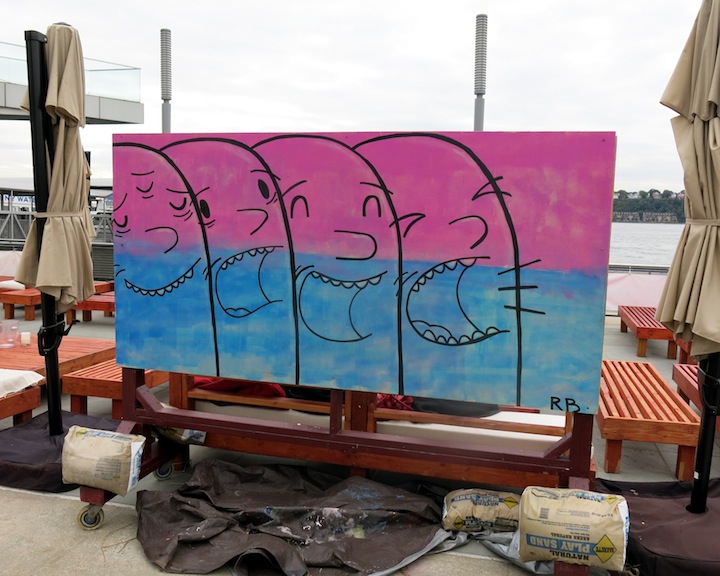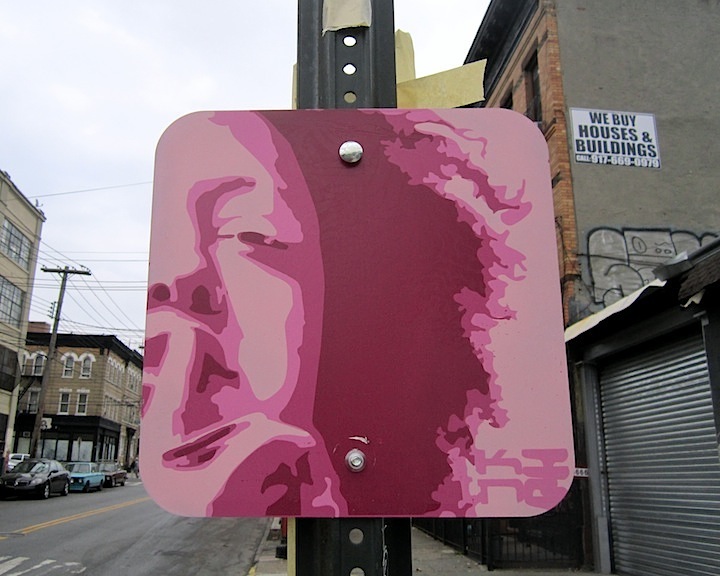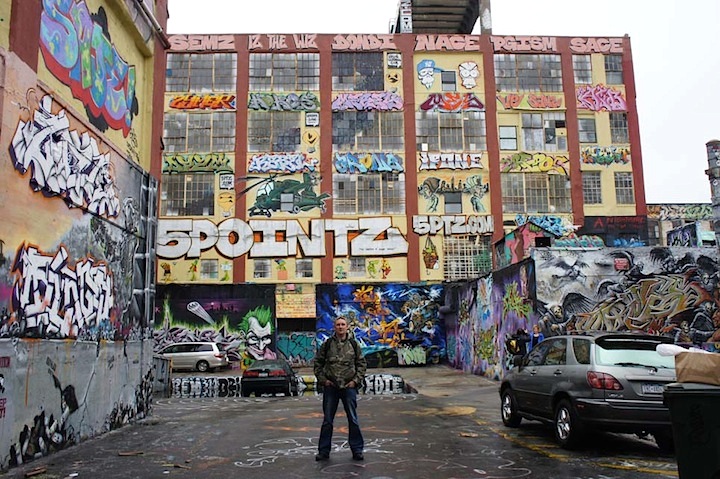I first met Viajero this past summer while he was fashioning a mural on East 111 Street for Los Muros Hablan NYC. I became an instant fan of his distinct aesthetic. A few months later, I caught up with him at the Julia De Burgos Cultural Center for its Dia De Los Muertos 2013 art exhibit.
When I came upon you at work on your mural for Los Muros Hablan, you mentioned that it was your first time painting in the streets. What was it like? Would you do it again?
It was a great experience. I loved working in a public space where I could interact with folks who passed by. Some stopped simply to observe, and others asked questions. And it was wonderful to have the opportunity to bring my vision to the streets of East Harlem – where my grandparents lived when they came from Puerto Rico. And, yes, I would love to do it again.
Could you tell us something about the Diaspora Mural? Who does it depict? What does it represent?
The subject of the mural is a young boy from Puerto Rico. The traditional mask that he is wearing symbolizes his cultural roots. Although I grew up here in NYC, I’m particularly interested in the immigrant experience and the notion of identity.
Your work is quite amazing. Do you have a formal art education?
When I was 12, I began taking specialized lessons at the Pratt Institute. I attended the Arts Students League of New York at age 18. I then earned a Bachelor of Fine Arts from the New World School of Art in Miami, Florida and a second BFA in Graphic Design from the New York Institute of Technology here in NYC.
Was all this formal training worthwhile?
I would say so. I have my own distinct style, but the art education I received drew it out of me and helped me refine it. Yes, my formal training was worthwhile.
Have any particular folks inspired you?
My grandfather was a painter. I have great admiration for him. He taught himself how to read and write in three different languages. My brother is a sculptor, and my uncle is an architect. I grew up among folks who inspired me.
What about cultures? What are some of the cultures that have influenced you?
I’ve traveled extensively through Africa, the Caribbean and Central America. I feel most connected to culture when spending time in countries and cities that hold onto their indigenous traditions. It is these indigenous cultures that have been my primary influence. I acknowledge and honor my indigenous roots in my artwork.
Have you exhibited your work in gallery settings?
Yes. I’ve shown my work in solo and group shows in the United States and in Puerto Rico.
How has the “art world” responded to you? Has it been receptive to your vision?
It has been. I feel that I’ve been able to find my own corner.
Any favorite artists?
My grandfather. He used to paint on coconuts falling from trees. Swoon is a particular favorite among street artists. And I love Whittfield Lovell – his portraits and his installations.
How has your work evolved — particularly in the past few years?
I’ve become increasingly engaged with the community.
Have you any particular theme that you attempt to convey in your work?
I’m interested in memory — in preserving it — especially in relation to our struggles. I like giving new life to found objects that embody cultural memory.
What do you see as the role of the artist in society?
For myself as an artist – it is to offer experiences to people that take them out of their comfort zone. I want folks to think and not blindly follow trends.
And we certainly look forward to seeing your vision on our streets again!
Interview by Lois Stavsky; photo of Viajero on East 111 Street by Dani Reyes Mozeson; photo of completed Diaspora Mural courtesy of the artist; final two photos of artwork at the Julia De Burgos Cultural Center by Lois Stavsky
{ 3 comments }
